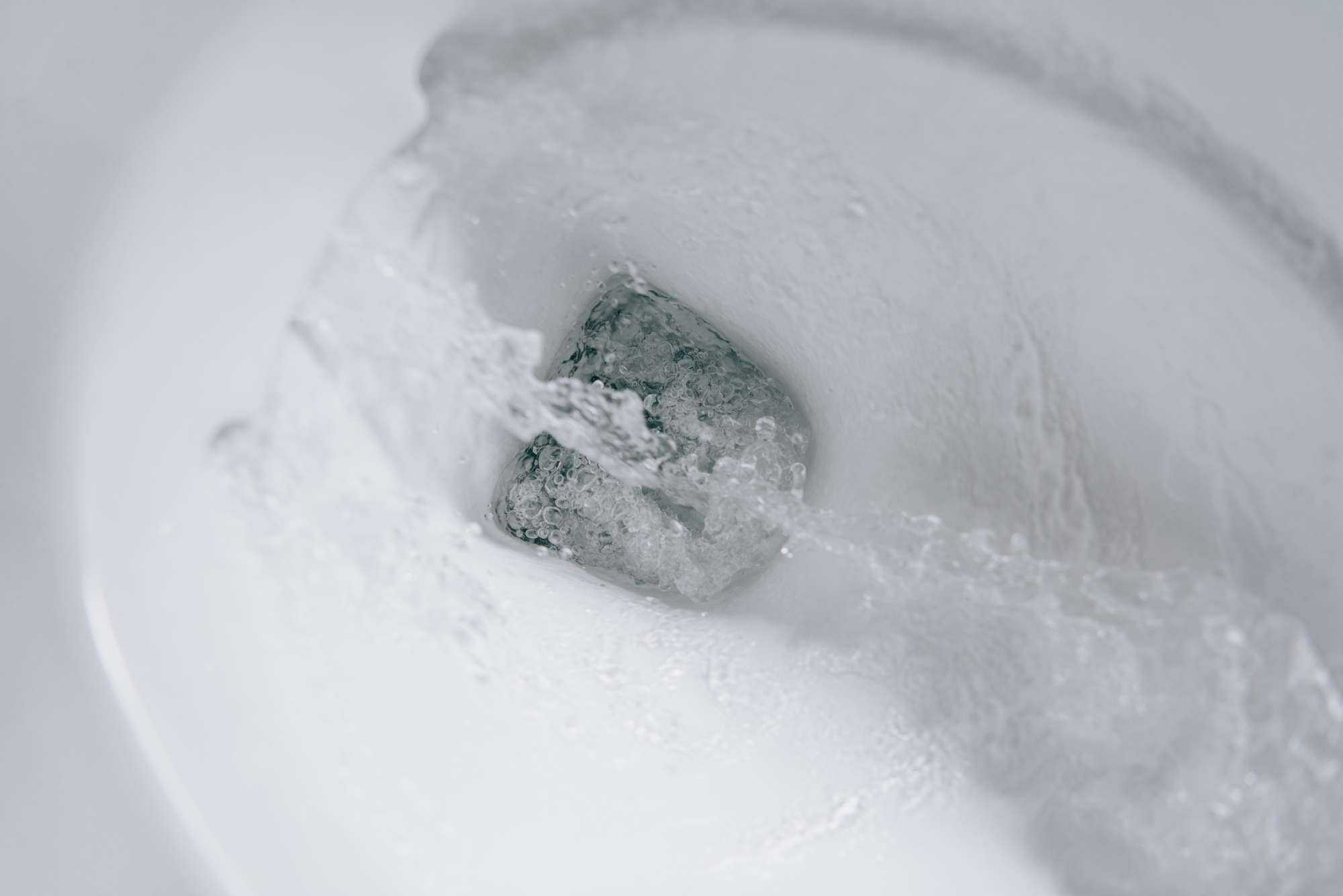BY W. GIFFORD- JONES MD & DIANA GIFFORD-JONES
Why do so many people leave the toilet seat up all the time? After all, it’s not the most attractive display object. Now, convincing medical evidence confirms we should cover the potty before flushing.
Researchers at Yangzhou University in China utilized computer modeling to show that flushing toilets does not keep all viruses and water in the bowl. They report in the journal Physics of Fluids that spray can fly as high as three feet! Ji-Xiang Wang, one of the researchers, added that the velocity of the spray could be even higher at public toilets.
Readers will understand that researching toilet seats has not been high priority for this column. But years ago, a female reader triggered curiosity about potties. She wrote, “What should I do if I’m standing in a public toilet, balancing on high heels, clutching my handbag with my teeth, panty hose at my knees, and wondering if is it safe to sit down?”
Subsequent research began with genital herpes. It’s estimated that about 18% of those between ages 19 to 49 develop genital herpes every year. There were always many myths about herpes and one was that it could only be transmitted by sexual contact.
Dr. Trudy Larsen, a researcher at the University of California, didn’t win the Nobel Prize in Medicine, but she did startle the scientific community. Larsen took samples from genital herpes lesions and placed them on toilet seats. She also asked patients with active lesions to sit on seats and then took samples. In her findings she reported the herpes virus survived for four hours on toilet seats!
Health authorities claim it would be a rare event to catch herpes from toilet seats. The infected person would have to have open sores and the unsuspecting next user of the seat would also need a skin cut or abrasion. Perhaps you’d accept the risk if this were the only threat.
But another study at McGill University in Montreal revealed the human papillomavirus that causes genital warts could also be detected on toilet seats.
As for that spray from a flush, researchers have determined that toilets produce bioaerosols – tiny airborne concentrations of particles. Carmen McDermott at the University of Washington School of Medicine reported in the Journal of Hospital Infection that the SARS virus could live in aerosols for three hours.
Good sense dictates that toilets are not the most hygienic areas. For instance, studies have found that 97% of seats have bacteria that cause boils, 81% germs that cause diphtheria and hepatitis. Other bacteria cause sore throats and food poisoning.
What about men? Studies show that when men urinate at the urinal, the spray travels up to three feet!
This column does not intend to trigger “potty paranoia”. But this fear exists. For instance, one survey showed that 30% of people “hold it”, rather than use a public toilet. Some 40% flush the toilet with their feet and 60% hover rather than sit on the toilet.
So what’s the answer? Bryan Bzdek, an aerosol researcher at Britain’s University of Bristol says, “Keep the seat down before flushing, clean the seat, and wash your hands.”
Sadly, too many people do not wash their hands – even doctors. At one infectious disease meeting of doctors, a student monitored their behaviour in a washroom. An amazing 50% of physicians did not wash their hands!
Final advice. Mother was right to be cautious of public toilet seats. Now, our computer age has proved flushing can toss viruses in fecal matter into the air. So, learn to keep toilet seats down before flushing and all the time when not in use. It’s safer and even looks cleaner.
Stay in the loop with exclusive news, stories, and insights—delivered straight to your inbox. No fluff, just real content that matters. Sign up today!
Dr. W. Gifford-Jones, MD is a graduate of the University of Toronto and the Harvard Medical School. He trained in general surgery at Strong Memorial Hospital, University of Rochester, Montreal General Hospital, McGill University and in Gynecology at Harvard. His storied medical career began as a general practitioner, ship’s surgeon, and hotel doctor. For more than 40 years, he specialized in gynecology, devoting his practice to the formative issues of women’s health. In 1975, he launched his weekly medical column that has been published by national and local Canadian and U.S. newspapers. Today, the readership remains over seven million. His advice contains a solid dose of common sense and he never sits on the fence with controversial issues. He is the author of nine books including, “The Healthy Barmaid”, his autobiography “You’re Going To Do What?”, “What I Learned as a Medical Journalist”, and “90+ How I Got There!” Many years ago, he was successful in a fight to legalize heroin to help ease the pain of terminal cancer patients. His foundation at that time donated $500,000 to establish the Gifford-Jones Professorship in Pain Control and Palliative Care at the University of Toronto Medical School. At 93 years of age he rappelled from the top of Toronto’s City Hall (30 stories) to raise funds for children with a life-threatening disease through the Make-a-Wish Foundation. Diana Gifford-Jones, the daughter of W. Gifford-Jones, MD, Diana has extensive global experience in health and healthcare policy. Diana is Special Advisor with The Aga Khan University, which operates 2 quaternary care hospitals and numerous secondary hospitals, medical centres, pharmacies, and laboratories in South Asia and Africa. She worked for ten years in the Human Development sectors at the World Bank, including health policy and economics, nutrition, and population health. For over a decade at The Conference Board of Canada, she managed four health-related executive networks, including the Roundtable on Socio-Economic Determinants of Health, the Centre for Chronic Disease Prevention and Management, the Canadian Centre for Environmental Health, and the Centre for Health System Design and Management. Her master’s degree in public policy at Harvard University’s Kennedy School of Government included coursework at Harvard Medical School. She is also a graduate of Wellesley College. She has extensive experience with Canadian universities, including at Carleton University, where she was the Executive Director of the Global Academy. She lived and worked in Japan for four years and speaks Japanese fluently. Diana has the designation as a certified Chartered Director from The Directors College, a joint venture of The Conference Board of Canada and McMaster University. She has recently published a book on the natural health philosophy of W. Gifford-Jones, called No Nonsense Health – Naturally!













